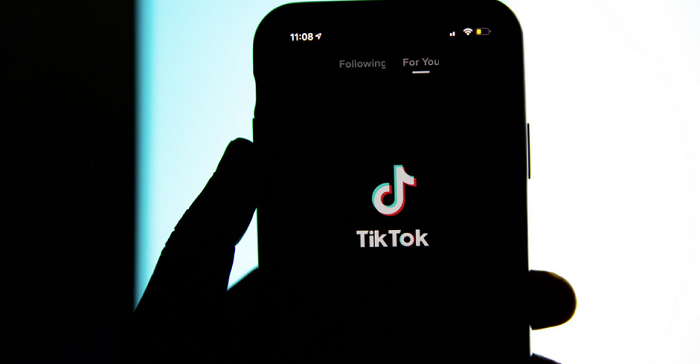SOCIAL
New Report Highlights the Decline of Facebook and IG, as TikTok Becomes the New Home of Entertainment

Have you found yourself using Instagram way less of late?
The once trendsetting social platform seems to have lost its luster, in large part due to Instagram’s insistence on pumping more content from accounts that you don’t follow into your main IG feed.
The ‘inspiration’ for that approach is TikTok, which has seen great success by focusing on content, as opposed to creators, with the app opening to a ‘For You’ feed of algorithmically-selected clips, based on your viewing habits. Instagram, as usual, saw that as an opportunity, and it’s since been working to negate your direct input – i.e. the accounts that you’ve chosen to follow – by showing you more and more stuff that it thinks you’ll like.
Which is annoying, and personally, I don’t find Instagram anywhere near as engaging as it once was.
And it seems many other users agree – according to a new report from The Wall Street Journal, Instagram engagement is declining, with Reels, in particular, seeing a significant drop-off in user engagement of late.
As reported by WSJ, TikTok users are spending over 10x as many hours consuming content in that app as Instagram users currently spend viewing Reels. According to a leaked internal report, Reels engagement is also in decline, dropping 13.6% in recent months – while ‘most Reels users have no engagement whatsoever.’
Meta has lightly refuted the claims, by stating that the usage data doesn’t provide the full picture. Though it declined to add any more context – which is Meta’s usual process when it can’t dispel such with its own insight.
Take, for example, total time spent in its apps. Back in 2016, as part of its regular performance reporting, Meta noted that people were spending more than 50 minutes per day, on average, using Facebook, Instagram and Messenger. It hasn’t reported any official stats on this ever since, which many believe is because that number has been in steady decline, and Meta sees no value in reporting that it’s losing ground, and has been for years now.
Meta, instead, is keen to talk about daily and monthly active users, where its figures are solid. But this almost feels like misdirection – Facebook and Instagram, in particular, have traditionally been based on building your social graph, and establishing a digital connection with the people that you know and want to stay connected with, and informed about.
As such, it makes sense that a lot of people log onto these apps each day just to see if their friends and family have shared anything new. That doesn’t, however, mean that they’re spending a lot of time in these apps.
Which is another reason why Meta’s trying to push more interesting content into your main feed, and in between updates from your connections – because if it can hook those people that are just checking in, then logging straight back out, that could be a key way to get its engagement stats back on track.
But it’s not working.
Again, Facebook and Instagram have spent years pushing you to establish connections with the people that you care about, even introducing an algorithm to ensure that you see the most important updates from these users and Pages every day.
At one point, Facebook noted that an average user was eligible to see over 1,500 posts every day, based on the people and Pages they were connected to – which is way more than they could ever view in a single day. So it brought in the algorithm to help maximize engagement – which also had the added benefit of squeezing Page reach, and forcing more brands to pay up.
But now, Facebook is actively working to add in even more content, cluttering your feed beyond the posts that you could already be shown, and making it harder than ever to see posts from the people you actually want to stay updated on.
Hard to see how that serves the user interests.
And again, it seems that users are understandably frustrated by this, based on these latest engagement stats, and previously reported info from Facebook which showed that young users are spending less and less time in the app.
Because it’s fundamentally going against its own ethos, purely for its own gain.
Accept it or not, people go to different apps for different purpose, which is the whole point of differentiation and finding a niche in the industry. People go to TikTok for entertainment, not for connecting with friends (worth noting that TikTok has actually labeled itself an ‘entertainment app’, as opposed to a social network), while users go to Facebook and IG to see the latest updates from people they care about.
The focus is not the same, and in this new, more entertainment-aligned paradigm, Meta’s once all-powerful, unmatched social graph is no longer the market advantage that it once was.
But Meta, desperately seeking to counter its engagement declines, keeps trying to get people to stick around, which is seemingly having the opposite effect.
Of course, Meta needs to try, it needs to seek ways to negate user losses as best it can – it makes sense that it’s testing out these new approaches.
But they’re not the solution.
How, then, can Instagram and Facebook actually re-engage users and stem the tide of people drifting across to TikTok?
There are no easy answers, but I’m tipping the next phase will involve exclusive contracts with popular creators, as they become the key pawns in the new platform wars.
TikTok’s monetization systems are not as evolved, and YouTube and Meta could theoretically blow it out of the water if they could rope in the top stars from across the digital ecosphere.
That could keep people coming to their apps instead, which could see TikTok engagement wither, like Vine before it.
But other than forcing people to spend more time on Facebook, by hijacking their favorite stars, there’s not a lot of compelling reasons for people to spend more time in Meta’s apps. At least, not right now, as they increasingly dilute any form of differentiation.
But essentially, it comes down to a major shift in user behaviors, away from following your friends, and seeing all the random stuff that they post, to following trends, and engaging with the most popular, most engaging content from across the platform, as opposed to walling off your own little space.
At one stage, the allure of social media was that it gave everyone their own soapbox, a means to share their voice, their opinion, to be their own celebrity in their own right, at least among their own networks. But over time, we’ve seen the negatives of that too. Over-sharing can lead to problems when it’s saved in the internet’s perfect memory for all time, while increasing division around political movements has also made people less inclined to share their own thoughts, for fear of unwanted criticism or misunderstanding.
Which is why entertainment has now become the focus of the next generation – it’s less about personal insights and more about engaging in cultural trends.
That’s why TikTok is winning, and why Facebook and Instagram are losing out, despite their frantic efforts.
SOCIAL
Snapchat Explores New Messaging Retention Feature: A Game-Changer or Risky Move?

In a recent announcement, Snapchat revealed a groundbreaking update that challenges its traditional design ethos. The platform is experimenting with an option that allows users to defy the 24-hour auto-delete rule, a feature synonymous with Snapchat’s ephemeral messaging model.
The proposed change aims to introduce a “Never delete” option in messaging retention settings, aligning Snapchat more closely with conventional messaging apps. While this move may blur Snapchat’s distinctive selling point, Snap appears convinced of its necessity.
According to Snap, the decision stems from user feedback and a commitment to innovation based on user needs. The company aims to provide greater flexibility and control over conversations, catering to the preferences of its community.
Currently undergoing trials in select markets, the new feature empowers users to adjust retention settings on a conversation-by-conversation basis. Flexibility remains paramount, with participants able to modify settings within chats and receive in-chat notifications to ensure transparency.
Snapchat underscores that the default auto-delete feature will persist, reinforcing its design philosophy centered on ephemerality. However, with the app gaining traction as a primary messaging platform, the option offers users a means to preserve longer chat histories.
The update marks a pivotal moment for Snapchat, renowned for its disappearing message premise, especially popular among younger demographics. Retaining this focus has been pivotal to Snapchat’s identity, but the shift suggests a broader strategy aimed at diversifying its user base.
This strategy may appeal particularly to older demographics, potentially extending Snapchat’s relevance as users age. By emulating features of conventional messaging platforms, Snapchat seeks to enhance its appeal and broaden its reach.
Yet, the introduction of message retention poses questions about Snapchat’s uniqueness. While addressing user demands, the risk of diluting Snapchat’s distinctiveness looms large.
As Snapchat ventures into uncharted territory, the outcome of this experiment remains uncertain. Will message retention propel Snapchat to new heights, or will it compromise the platform’s uniqueness?
Only time will tell.
SOCIAL
Catering to specific audience boosts your business, says accountant turned coach

While it is tempting to try to appeal to a broad audience, the founder of alcohol-free coaching service Just the Tonic, Sandra Parker, believes the best thing you can do for your business is focus on your niche. Here’s how she did just that.
When running a business, reaching out to as many clients as possible can be tempting. But it also risks making your marketing “too generic,” warns Sandra Parker, the founder of Just The Tonic Coaching.
“From the very start of my business, I knew exactly who I could help and who I couldn’t,” Parker told My Biggest Lessons.
Parker struggled with alcohol dependence as a young professional. Today, her business targets high-achieving individuals who face challenges similar to those she had early in her career.
“I understand their frustrations, I understand their fears, and I understand their coping mechanisms and the stories they’re telling themselves,” Parker said. “Because of that, I’m able to market very effectively, to speak in a language that they understand, and am able to reach them.”Â
“I believe that it’s really important that you know exactly who your customer or your client is, and you target them, and you resist the temptation to make your marketing too generic to try and reach everyone,” she explained.
“If you speak specifically to your target clients, you will reach them, and I believe that’s the way that you’re going to be more successful.
Watch the video for more of Sandra Parker’s biggest lessons.
SOCIAL
Instagram Tests Live-Stream Games to Enhance Engagement

Instagram’s testing out some new options to help spice up your live-streams in the app, with some live broadcasters now able to select a game that they can play with viewers in-stream.
As you can see in these example screens, posted by Ahmed Ghanem, some creators now have the option to play either “This or That”, a question and answer prompt that you can share with your viewers, or “Trivia”, to generate more engagement within your IG live-streams.
That could be a simple way to spark more conversation and interaction, which could then lead into further engagement opportunities from your live audience.
Meta’s been exploring more ways to make live-streaming a bigger consideration for IG creators, with a view to live-streams potentially catching on with more users.
That includes the gradual expansion of its “Stars” live-stream donation program, giving more creators in more regions a means to accept donations from live-stream viewers, while back in December, Instagram also added some new options to make it easier to go live using third-party tools via desktop PCs.
Live streaming has been a major shift in China, where shopping live-streams, in particular, have led to massive opportunities for streaming platforms. They haven’t caught on in the same way in Western regions, but as TikTok and YouTube look to push live-stream adoption, there is still a chance that they will become a much bigger element in future.
Which is why IG is also trying to stay in touch, and add more ways for its creators to engage via streams. Live-stream games is another element within this, which could make this a better community-building, and potentially sales-driving option.
We’ve asked Instagram for more information on this test, and we’ll update this post if/when we hear back.
-

 WORDPRESS6 days ago
WORDPRESS6 days agoTurkish startup ikas attracts $20M for its e-commerce platform designed for small businesses
-

 PPC7 days ago
PPC7 days agoA History of Google AdWords and Google Ads: Revolutionizing Digital Advertising & Marketing Since 2000
-

 MARKETING6 days ago
MARKETING6 days agoRoundel Media Studio: What to Expect From Target’s New Self-Service Platform
-
SEARCHENGINES5 days ago
Daily Search Forum Recap: April 12, 2024
-

 SEO5 days ago
SEO5 days agoGoogle Limits News Links In California Over Proposed ‘Link Tax’ Law
-

 MARKETING7 days ago
MARKETING7 days agoUnlocking the Power of AI Transcription for Enhanced Content Marketing Strategies
-

 SEARCHENGINES6 days ago
SEARCHENGINES6 days agoGoogle Search Results Can Be Harmful & Dangerous In Some Cases
-

 SEO4 days ago
SEO4 days ago10 Paid Search & PPC Planning Best Practices















You must be logged in to post a comment Login